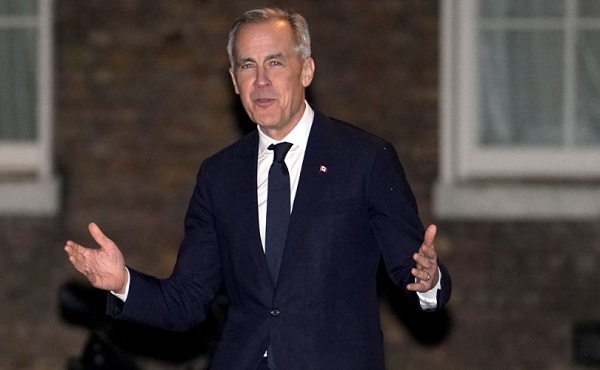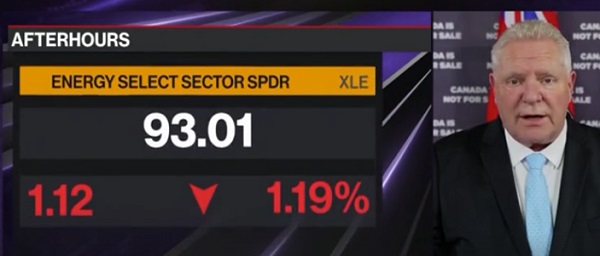Alberta
Internet Child Exploitation unit arrests over 2 dozen Albertans for online child sexual exploitation offences

From the ALERT’s Internet Child Exploitation Unit
26 Albertans Charged in Online Child Sexual Exploitation Investigations
ALERT’s Internet Child Exploitation (ICE) unit has arrested 26 suspects from across Alberta for offences related to online child sexual exploitation.
Between June 20 and September 17, 2020, ICE has charged 26 suspects with 63 offences. Most of the arrests came as the result of investigative referrals from the RCMP’s National Child Exploitation Crime Centre, which works with internet and social media providers to track and investigate online instances of child sexual exploitation.
“In Alberta, those who participate in the exploitation of children will be prosecuted to the fullest extent of the law. The Government of Alberta will ensure our law enforcement has the tools and resources to track down child predators and bring them to justice,” said Kaycee Madu, Minister of Justice and Solicitor General. “On behalf of all law-abiding Albertans, I thank ALERT and the law enforcement organizations across the province that worked tirelessly to arrest and charge these criminals. Alberta’s justice system is here for all Albertans, especially for children victimized by sexual predators.”
“The internet isn’t anonymous and these arrests demonstrate ALERT’s willingness to travel to all corners of the province to make arrests, put predators behind bars, and keep kids safe,” said Supt. Dwayne Lakusta, ALERT Chief Executive Officer.
There is no definitive link between the suspects other than the nature of offences allegedly committed. Each of the suspects was charged with at least one child pornography offence:
- a 16-year-old young offender from Sherwood Park;
- Kevin Borchert, a 29-year-old man from Sherwood Park;
- David Cadieux, a 27-year-old man from Calgary;
- Joseph Cadrain, a 32-year-old man from Strathmore;
- Gary Campbell, a 28-year-old man from Lamont;
- Michael Ciesla, a 32-year-old man from Edmonton;
- Michael Courtepatte, a 44-year-old man from Athabasca;
- Victor Delage, a 29-year-old man from Wainright;
- Gerald Donel, a 57-year-old man from Edmonton;
- Brian Farris, a 40-year-old man from Grande Prairie;
- Humberto Ferreyra, a 51-year-old man from Lake Louise;
- Coby Franz, a 42-year-old man from Alder Flats;
- Sean Giles, a 41-year-old man from Lethbridge;
- Brock Hann, a 21-year-old man from Morinville;
- Richard Lepchuk, a 59-year-old man from Edmonton;
- Christian Meier, a 52-year-old man from Calgary;
- Troy Melnyk, a 49-year-old man from Spruce Grove;
- Stephen Miehe, a 28-year-old man from Cardston;
- Alasdair Mills, a 61-year-old man from Edmonton;
- David Peeke, a 45-year-old man from Edmonton;
- Christopher Piers-Hanley, a 31-year-old man from Edmonton;
- Kalon Specht, a 30-year-old man from Edmonton;
- Andrew Stredick, a 30-year-old man from Calgary;
- Charles Tadashore, a 43-year-old man from Calgary;
- Laurence Thrasher, a 40-year-old man from Edmonton; and
- Michael Vandermay, a 52-year-old man from Calgary.
During the investigations and subsequent arrests, ICE worked in collaboration with a number of police agencies, including: Caribou Child and Youth Centre; Calgary Police Service; Edmonton Police Service; and various RCMP detachments, including Grande Prairie, Spruce Grove, Strathcona County, Wainright, Breton, Strathmore, Olds, Morinville, Cardston, Lake Louise, Fort Saskatchewan, and Athabasca.
ICE is an integrated team that includes members of Calgary Police Service, Edmonton Police Service, Lethbridge Police Service, Medicine Hat Police Service, and RCMP. ICE investigates offences involving child pornography, any computer-related child sexual abuse, child luring over the Internet, voyeurism involving victims under the age of 18, and child sex trade/tourism.
ICE speculates that the rise in the number of investigative referrals is likely in part related to digital dependency during COVID-19 isolation measures.
The Canadian Centre for Child Protection has information on its site dedicated to supporting families during the COVID-19 crisis, including resources for families and caregivers; schools and educators; and child-serving organizations. This information is available at: https://protectchildren.ca/en/resources-research/supporting-you-through-covid-19/
ALERT was established and is funded by the Alberta Government and is a compilation of the province’s most sophisticated law enforcement resources committed to tackling serious and organized crime.
Alberta
Big win for Alberta and Canada: Statement from Premier Smith

Premier Danielle Smith issued the following statement on the April 2, 2025 U.S. tariff announcement:
“Today was an important win for Canada and Alberta, as it appears the United States has decided to uphold the majority of the free trade agreement (CUSMA) between our two nations. It also appears this will continue to be the case until after the Canadian federal election has concluded and the newly elected Canadian government is able to renegotiate CUSMA with the U.S. administration.
“This is precisely what I have been advocating for from the U.S. administration for months.
“It means that the majority of goods sold into the United States from Canada will have no tariffs applied to them, including zero per cent tariffs on energy, minerals, agricultural products, uranium, seafood, potash and host of other Canadian goods.
“There is still work to be done, of course. Unfortunately, tariffs previously announced by the United States on Canadian automobiles, steel and aluminum have not been removed. The efforts of premiers and the federal government should therefore shift towards removing or significantly reducing these remaining tariffs as we go forward and ensuring affected workers across Canada are generously supported until the situation is resolved.
“I again call on all involved in our national advocacy efforts to focus on diplomacy and persuasion while avoiding unnecessary escalation. Clearly, this strategy has been the most effective to this point.
“As it appears the worst of this tariff dispute is behind us (though there is still work to be done), it is my sincere hope that we, as Canadians, can abandon the disastrous policies that have made Canada vulnerable to and overly dependent on the United States, fast-track national resource corridors, get out of the way of provincial resource development and turn our country into an independent economic juggernaut and energy superpower.”
Alberta
Energy sector will fuel Alberta economy and Canada’s exports for many years to come

From the Fraser Institute
By any measure, Alberta is an energy powerhouse—within Canada, but also on a global scale. In 2023, it produced 85 per cent of Canada’s oil and three-fifths of the country’s natural gas. Most of Canada’s oil reserves are in Alberta, along with a majority of natural gas reserves. Alberta is the beating heart of the Canadian energy economy. And energy, in turn, accounts for one-quarter of Canada’s international exports.
Consider some key facts about the province’s energy landscape, as noted in the Alberta Energy Regulator’s (AER) 2023 annual report. Oil and natural gas production continued to rise (on a volume basis) in 2023, on the heels of steady increases over the preceding half decade. However, the dollar value of Alberta’s oil and gas production fell in 2023, as the surging prices recorded in 2022 following Russia’s invasion of Ukraine retreated. Capital spending in the province’s energy sector reached $30 billion in 2023, making it the leading driver of private-sector investment. And completion of the Trans Mountain pipeline expansion project has opened new offshore export avenues for Canada’s oil industry and should boost Alberta’s energy production and exports going forward.
In a world striving to address climate change, Alberta’s hydrocarbon-heavy energy sector faces challenges. At some point, the world may start to consume less oil and, later, less natural gas (in absolute terms). But such “peak” consumption hasn’t arrived yet, nor does it appear imminent. While the demand for certain refined petroleum products is trending down in some advanced economies, particularly in Europe, we should take a broader global perspective when assessing energy demand and supply trends.
Looking at the worldwide picture, Goldman Sachs’ 2024 global energy forecast predicts that “oil usage will increase through 2034” thanks to strong demand in emerging markets and growing production of petrochemicals that depend on oil as the principal feedstock. Global demand for natural gas (including LNG) will also continue to increase, particularly since natural gas is the least carbon-intensive fossil fuel and more of it is being traded in the form of liquefied natural gas (LNG).
Against this backdrop, there are reasons to be optimistic about the prospects for Alberta’s energy sector, particularly if the federal government dials back some of the economically destructive energy and climate policies adopted by the last government. According to the AER’s “base case” forecast, overall energy output will expand over the next 10 years. Oilsands output is projected to grow modestly; natural gas production will also rise, in part due to greater demand for Alberta’s upstream gas from LNG operators in British Columbia.
The AER’s forecast also points to a positive trajectory for capital spending across the province’s energy sector. The agency sees annual investment rising from almost $30 billion to $40 billion by 2033. Most of this takes place in the oil and gas industry, but “emerging” energy resources and projects aimed at climate mitigation are expected to represent a bigger slice of energy-related capital spending going forward.
Like many other oil and gas producing jurisdictions, Alberta must navigate the bumpy journey to a lower-carbon future. But the world is set to remain dependent on fossil fuels for decades to come. This suggests the energy sector will continue to underpin not only the Alberta economy but also Canada’s export portfolio for the foreseeable future.
-

 2025 Federal Election1 day ago
2025 Federal Election1 day agoWEF video shows Mark Carney pushing financial ‘revolution’ based on ‘net zero’ goals
-

 Crime2 days ago
Crime2 days agoFirst Good Battlefield News From Trump’s Global War on Fentanyl
-

 2025 Federal Election1 day ago
2025 Federal Election1 day agoThree cheers for Poilievre’s alcohol tax cut
-

 2025 Federal Election1 day ago
2025 Federal Election1 day agoMORE OF THE SAME: Mark Carney Admits He Will Not Repeal the Liberal’s Bill C-69 – The ‘No Pipelines’ Bill
-

 2025 Federal Election1 day ago
2025 Federal Election1 day ago‘Coordinated and Alarming’: Allegations of Chinese Voter Suppression in 2021 Race That Flipped Toronto Riding to Liberals and Paul Chiang
-

 Break The Needle2 days ago
Break The Needle2 days agoWhy psychedelic therapy is stuck in the waiting room
-

 2025 Federal Election1 day ago
2025 Federal Election1 day agoDon’t let the Liberals fool you on electric cars
-

 2025 Federal Election1 day ago
2025 Federal Election1 day ago‘I’m Cautiously Optimistic’: Doug Ford Strongly Recommends Canada ‘Not To Retaliate’ Against Trump’s Tariffs










